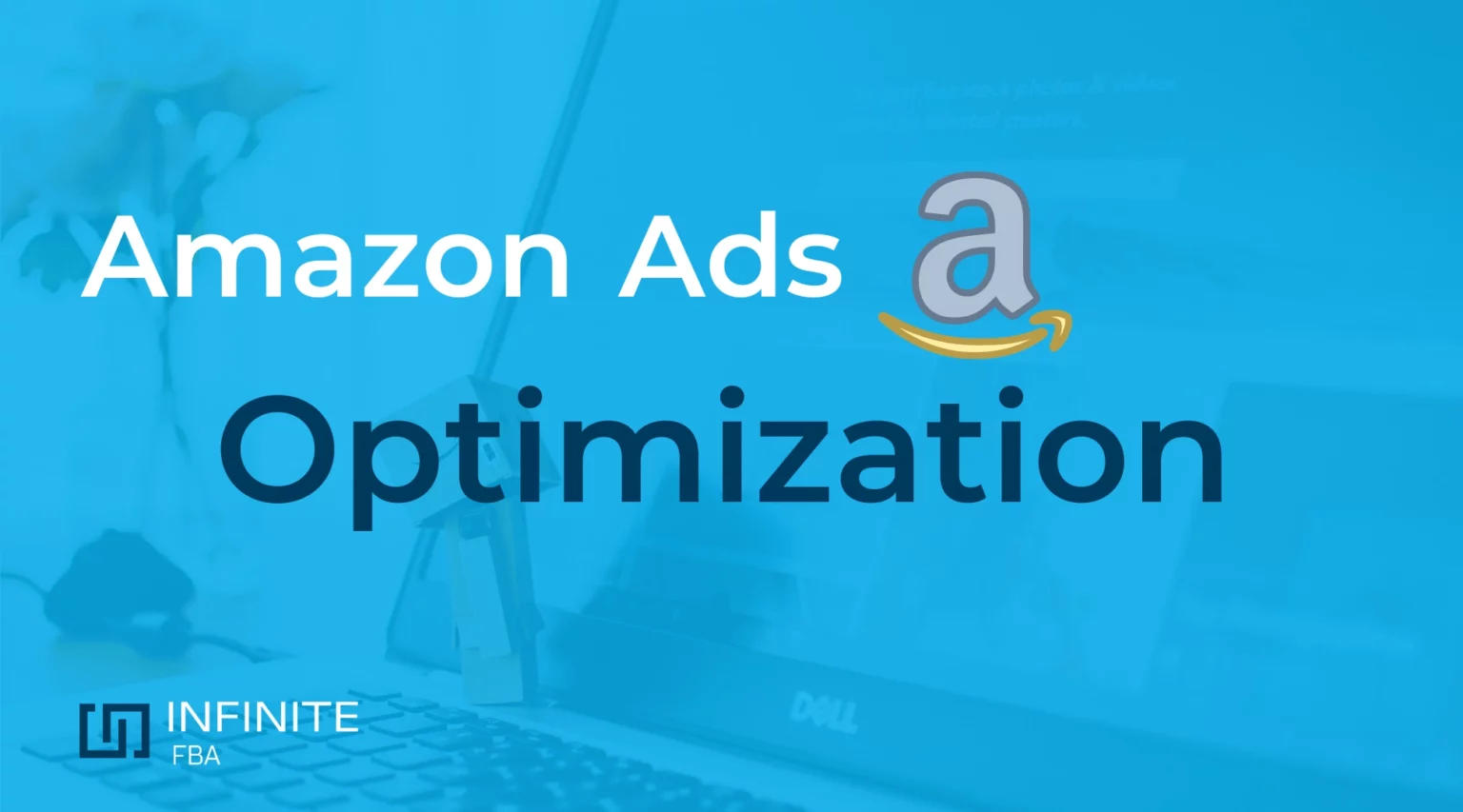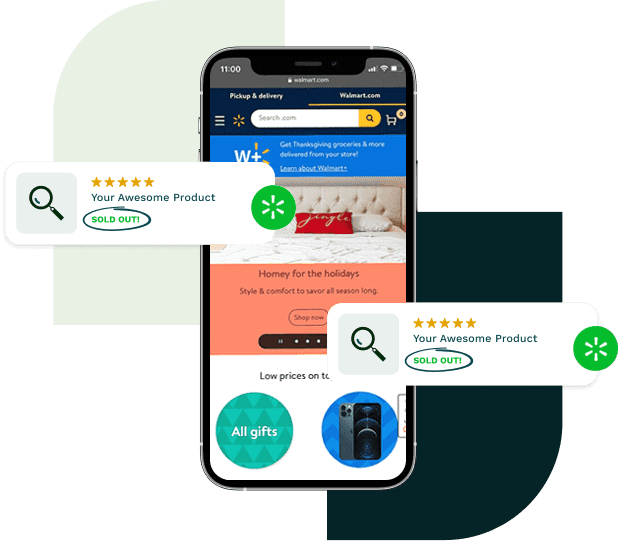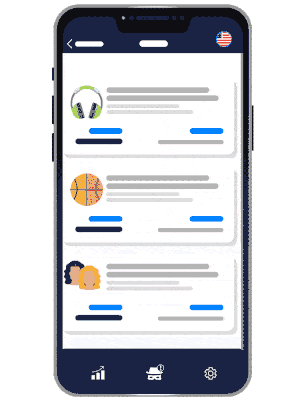Getting traction for a new product on Amazon is not an easy task. Your product needs an appealing listing, description, price, and also the actual sales that will tell Amazon’s algorithm to rank it higher. To help get your product off the ground, you can generate traffic to your product listing yourself. Amazon ads are the perfect way to do this.
The Amazon ad platform offers sellers a way to see how well your products perform. And it works; in fact, Amazon’s ad business grew 19% in 2022 alone. But like any ad platform, you need to run tests and invest in Amazon ads optimization to avoid wasting money and to make the most profit.
So what does Amazon ad optimization take to be successful? Learn the basics of Amazon ads and how to tweak your listings for success in this guide.
What Are Amazon PPC Ads and Why Are They Important?
Amazon PPC (pay-per-click) ads allow Amazon sellers to increase their product’s reach. Sellers can pay for ad spots on specific Amazon pages and then watch the ad performance via an advertising dashboard that allows sellers to create and iterate on ad campaigns. There are different types of ads and bidding options available to sellers on the platform.
Types of Amazon Ads
Amazon offers three main types of advertising to sellers:
- Sponsored products
- Sponsored brands
- Product display ads
Sponsored products are the most general type of PPC advertising on Amazon. These ads are primarily located on Amazon search result pages. After searching for a category or product, an Amazon shopper will see your sponsored item at the top of the page (instead of seeing the first organic, non-ad search listing). Most product pages also have a sponsored products carousel where your product will show as well.
An advantage of using sponsored products is that you don’t have to create separate advertising graphics or marketing copy. Your product appears like a normal product in the search results—meaning you can get your sponsored products up and running quickly.
Sponsored brand ads are a great way to increase your brand’s awareness on Amazon. Instead of buying individual product slots, you buy a banner ad with room to promote three products you offer. Another big benefit of branded ads is the custom landing pages that come with them. These pages let you discuss your brand and its unique benefits.
Sponsored brand ads are more restrictive than standard sponsored product ads. Amazon doesn’t want no-name companies to use brand advertising. Because of that, these ads are restricted to companies who are part of Amazon’s brand registry.
Product display ads are another Amazon ad exclusive to businesses in the brand registry. There is less competition for sellers in this ad type.
A big benefit of display ads is that you aren’t limited to the Amazon website. You can show your products on other Amazon platforms—such as Twitch, Fire TV, IMDB, demand-side platform (DSP), and others.
A difference between display ads and product/brand ads is that display ads don’t focus on keywords. Instead, Amazon targets customers based on their interests, favorite product categories, and purchases of similar products.
PPC Targeting Methods
Amazon allows sellers to target customers in several different ways. Understanding these methods will allow you to customize your Amazon ads optimizing process and create different ad groups.
There are three types of targeting strategies to consider:
- ASIN targeting allows you to target products by their unique Amazon ASIN number and reach people currently looking at products similar to yours
- Keyword targeting allows you to target the search terms people use to find products and to appear in front of people looking for your product type as well as for products in complementary categories
- Category targeting allows you to target specific product categories on Amazon, from general to highly-specific categories
If you decide to use keyword targeting for your ads, you also have a few more targeting methods to choose from including:
- Broad targeting where your ad will appear for all search phrases included in your keyword list as well as close variants
- Phrase targeting where your ad will appear for search terms and phrases that include your keywords but not for related terms
- Exact targeting where your ad will only appear for terms as they appear in your keyword list
PPC Bidding Process
Amazon offers two primary ways to bid on sponsored product PPC ads: dynamic and fixed bidding.
When you use dynamic bidding, you allow Amazon to control your bid amounts. Your first option for this bidding type is “down only.” In a down-only bid, Amazon reduces your bid amount in real time if it believes a click won’t result in a sale. This type of bid lets you reduce costs on unprofitable campaigns.
Amazon also offers “up-and-down” dynamic bidding. In this situation, Amazon will decrease bid amounts for unprofitable clicks as well as increase bid amounts if it believes a click will likely offer a conversion.
A fixed bid gives you 100% control of the bid price. This option is great if your goal isn’t conversions but instead to increase your brand awareness. Amazon will continue showing your product listing if your bid is high enough, whether or not you make sales.
Benefits of PPC Advertising
Now that you understand what Amazon ads are and how they work, the question is: Are they worth the money? Here are a few benefits of investing in Amazon ads.
- Pay for clicks: One problem with some PPC platforms is the way they charge. Instead of paying for clicks, you may sometimes pay for impressions (the amount of people that see your ad). If nobody clicks on your ads, you can waste a lot of money. Amazon PPC charges you for the clicks instead.
- Get quick traffic: You can get a lot of traffic through organic Amazon search results, but that may take some time to happen because Amazon won’t immediately rank new products. You can get faster traffic if you buy PPC ads and test products to see if they convert quickly.
Boost organic rankings: Amazon doesn’t want to show products to shoppers that don’t sell—it’s a big reason why Amazon doesn’t rank new products immediately. Running paid ads gives you a chance to prove that your product makes sales. If you send traffic to your product and have a good conversion rate, it’s a sign to Amazon that your product will sell and is worth ranking higher.
Tips for Optimizing Amazon PPC Ad Campaigns
You can’t just throw a few keywords on an Amazon ad campaign and expect success. Learning how to optimize Amazon sponsored ads will save you money and get you better sales. Here are a few tactics to help you get the most out of your ad dollars.
Optimize Listings and Ads with Keywords
Keywords are one of the most important factors for organic search result rankings and ads. You need the right keywords to target the right buyers for your products.
That’s why it’s important to make use of keywords for both product listings and ads. Product listing keywords will help you rank for search terms, and advertising keywords will help you target your ads to the right shoppers and search results pages.
Use a Unique Keyword List for Every Campaign
If you have a general ad campaign, including as many keywords as possible is fine. But the more specific your campaign is, the more critical it is to avoid this.
Instead, find a unique keyword list for smaller, specific campaigns. For example, a seller offering sneakers won’t want to advertise red sneakers to shoppers looking for different colors.
Use Negative Keyword Settings
The keyword research process will give you a lot of potential keywords to use for your Amazon campaign. This is great when casting a wide net. But at the same time, not all those keywords are profitable and using them as targets for your ads could be a waste of money.
Since you can only create Amazon campaigns for broad, phrase, and exact-match keywords, Amazon doesn’t always show your ad for the exact keywords you enter. However, you can directly tell Amazon which keywords not to surface your ad for.
Once you start generating sales, you’ll notice which keywords produce results and which lead to wasted money. Use your sales report to identify which terms aren’t profitable and add them to your negative keywords to stop your ads for those terms.
Focus on New and Successful Keyword Campaigns
New keyword targets need a lot of initial data which means they need as much traffic as possible to see what works. Try bidding higher on these keywords to gather more data and optimize from there.
The same is also true for your successful campaigns. Once you uncover which ad keywords are profitable, increase your bids to get more traffic. Keep driving as much traffic as possible (as long as you don’t cut too far into your profit).
Use the Amazon Auto Campaign
Amazon offers an auto ads feature that allows you to let Amazon run your campaign for you. Amazon will find the right keywords, set your product bids, and show your ads to the right audience.
The auto ads feature is a great way to gather initial data about what works and cut down on the upfront, manual work. Explore auto campaigns to see what they can offer and use the data they gather to better optimize your targeted manual ad campaigns.
Change Bidding for Product Performance
If you have campaigns running for multiple products, you’ll start noticing trends over time. Some of your products will outperform others.
When you start seeing this happen, change how you bid on those products. You can spend more ad dollars to promote these products and scale those product campaigns up to capitalize on the profit of the sales performance.
Optimize Ad Timing
The time of day you advertise on Amazon can greatly impact your ad campaigns. If you’re advertising a product for office workers, you may not get the type of traffic that will convert to sales if you advertise during the workday. Instead, running campaigns in the evening when your audience is at home is a better choice.
Consider when your audience browses Amazon and optimize your ad bids for your campaigns to target those times.
Strategically Structure Your Ads
Most sellers don’t have a single campaign for their entire store. Instead, you’ll need smaller campaigns for different purposes and products. An ad strategy and structure will help you manage the different ad types for your products.
Structure your campaigns so they make sense. Label them correctly—using products, categories, and other descriptors in the title.
Use Ad Optimization Software To Help
You can do a lot to optimize Amazon ads on your own. But if you have several campaigns, manual optimization may not be time efficient.
Check out the best software to optimize Amazon ads to handle the heavy lifting. With ad optimization software, you’ll be able to use features like:
- Automated bid management
- Ranking trackers for your products and competitors
- Alerts on performance problems
- Targeted recommendations
Monitoring and Performance
Amazon ad optimization isn’t complete after you finish your initial setup. There are continuing tests to run that have the chance of helping your products reach more people and of dropping your cost per click.
Monitoring your ad campaigns will give you more information on how to best do this. Thorough monitoring can alert you to the parts of your ad campaigns that work and the parts that don’t. As time passes, you’ll be able to maintain your current profit levels—and in some cases, make your ads even more profitable by capitalizing on trends using the data you’ve collected.
Below are a few tips on how to optimize Amazon ads with the data from product performance monitoring.
Watch for Market and Consumer Shifts
There’s no guarantee that an ad campaign that works today will continue working in the future. Consumer trends can change a lot over time due to shifting preferences or changes in the economy.
You’ll see the impact of those changes in your Amazon ad results. When a change happens that reduces the effectiveness of your ads, optimize your ad for different keywords or consumer preferences to reinvigorate your campaigns.
If your product has completely fallen out of trend, you may need to shift your ad strategy altogether and branch into a new market.
Test Different Bidding and Scaling Strategies
Sticking with one working strategy can be tempting. It’s understandable that some sellers won’t want to risk diversifying successful ad campaigns.
But with all of the options available on Amazon, sticking with one bidding or product strategy may be a mistake. Instead, test different bidding types to see how they affect your clicks and sales. If you’ve invested in a winning product campaign that uses dynamic bidding and you’re seeing profits, use them to boost an underperforming product using a fixed bidding strategy to increase your brand awareness in new markets and see if it is worth scaling up.
Amazon PPC Optimization FAQ
What Is PPC Ad Optimization on Amazon?
Amazon PPC optimization is the process Amazon sellers go through to update and enhance their current Amazon ad campaigns. Optimizations can reduce the cost per click of an ad and make products more profitable.
Initial ad campaigns probably won’t make money. Instead, monitor the campaigns and modify your ads as you gather data to determine which tactics lead to more customers.
PPC ad optimization involves a few things including:
Trying different Amazon bid strategies and times
Finding which keywords result in sales
Testing multiple campaign angles at once
Running small A/B tests to test optimizations
Optimizations don’t stop when an ad campaign shows success. Instead, monitoring of existing campaigns helps sellers get as much profit from each campaign as possible and make sure existing profitable campaigns don’t go stale.
How Much Should I Spend on Amazon PPC Ads?
The amount of money you spend on Amazon PPC ads will vary depending on how far along you are in the advertising process and the size of your business.
If you’re just starting your ad campaigns, you don’t need to spend much to get started. Your initial goal will be to gather data to see which types of ads, keywords, and bidding amounts produce the best results. You don’t want to spend a lot on your campaigns unless you know they will produce a return. Once you find a campaign that generates enough profit, you can start scaling your daily ad spend to generate more sales.
How Is Amazon Ad Optimization Different from Listing Optimization?
Amazon ad optimization is the process of enhancing your Amazon ads with different bidding strategies, bid times, and keywords. The goal is to reduce your cost per click as much as possible and to use ads to drive sales for your products.
Product listing optimization covers more than Amazon ads. Many of your product sales won’t come from ads but instead from shoppers who find your listing by searching naturally on Amazon. Your product listing is the way your product surfaces in these searches. Using natural keywords, adding images, and featuring good reviews are all ways to optimize your product page for the Amazon search algorithm and show up for more Amazon keywords.
Should I Use the Amazon PPC Auto Feature?
Amazon auto ads is a feature worth trying. It takes a lot of work to find keywords for ads and optimize campaigns manually. And if you don’t have experience with PPC advertising, you may make mistakes that cost money and drain your advertising budget.
Auto ads are great for sellers who are just starting out as well as for initial ad campaigns. Amazon will handle the heavy lifting for you and provide a report to let you know how things are going. You can then use the information you get to create more informed manual campaigns.
How Often Should I Optimize and Scale My Amazon PPC Ad Campaigns?
PPC ad optimization is a process that never ends. Even if you have a profitable campaign today, ad blindness and changing consumer trends can change the profitability of a winning campaign to make it less profitable.
Instead, it’s best to constantly monitor your campaigns to make sure they don’t lose money. Watch your average profit, total new customers, and other numbers to see if there is additional testing and optimization to do.
How much you scale your Amazon campaigns will depend on how much money they make. You don’t want to scale unprofitable and unoptimized campaigns—you’ll waste too much cash for too little return. Scale your campaigns when you find a winning ad strategy and generate enough revenue with that campaign to fuel new tests and optimizations.
Do I Need an Amazon Advertising Agency To Launch Campaigns?
There’s nothing stopping you from setting up and launching an Amazon ad campaign on your own. Amazon has a robust advertising backend that lets all Amazon sellers set up campaigns the way they please. Even though it’s not hard to get an ad campaign up and running, making it profitable is another story. It will take a lot of testing—and a lot of money—to make a campaign that generates sales.
Many Amazon sellers are better off hiring an Amazon advertising agency for their ad campaigns. An experienced agency already knows the best tactics available for optimizing Amazon ads and making them profitable. You may be able to get there eventually, but if you want to grow your Amazon business today, working with a professional agency is the fastest way to start growing.










